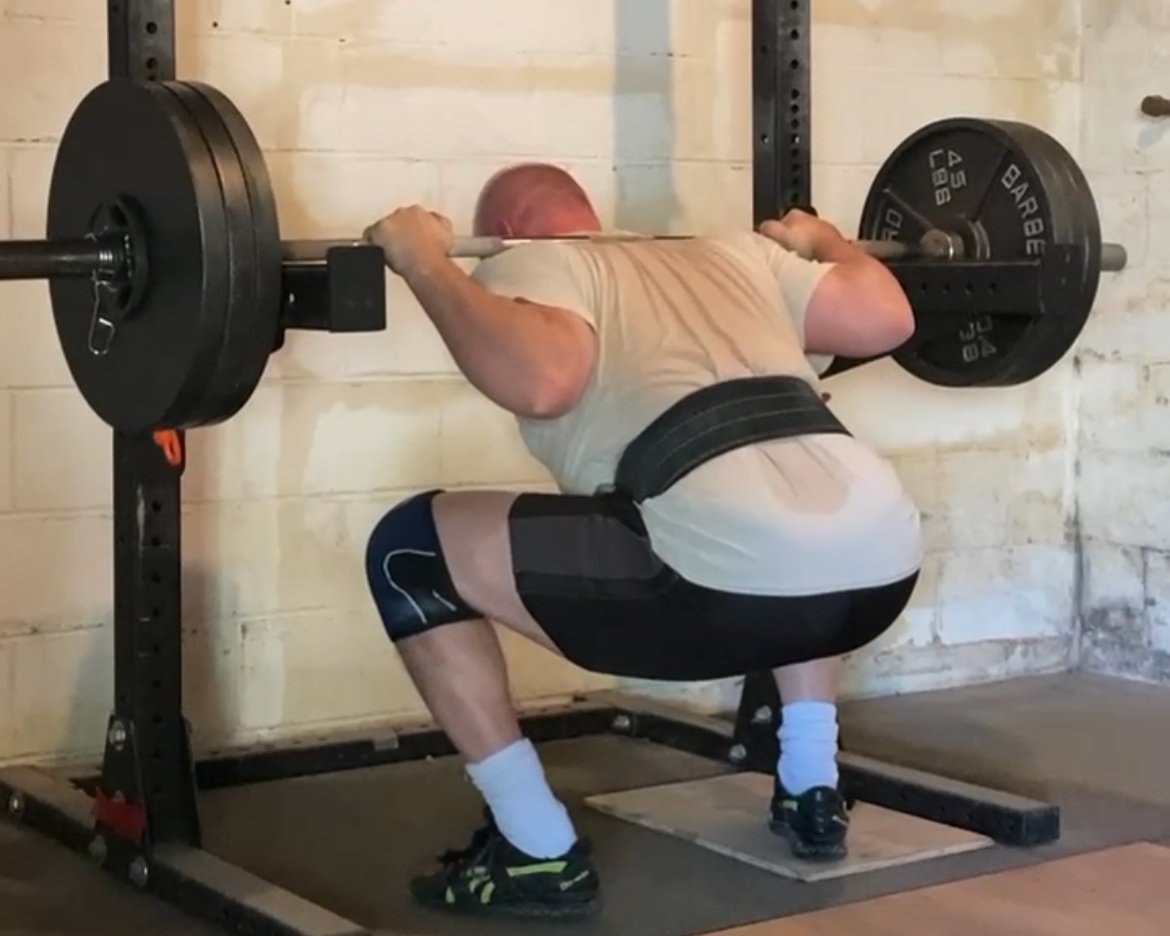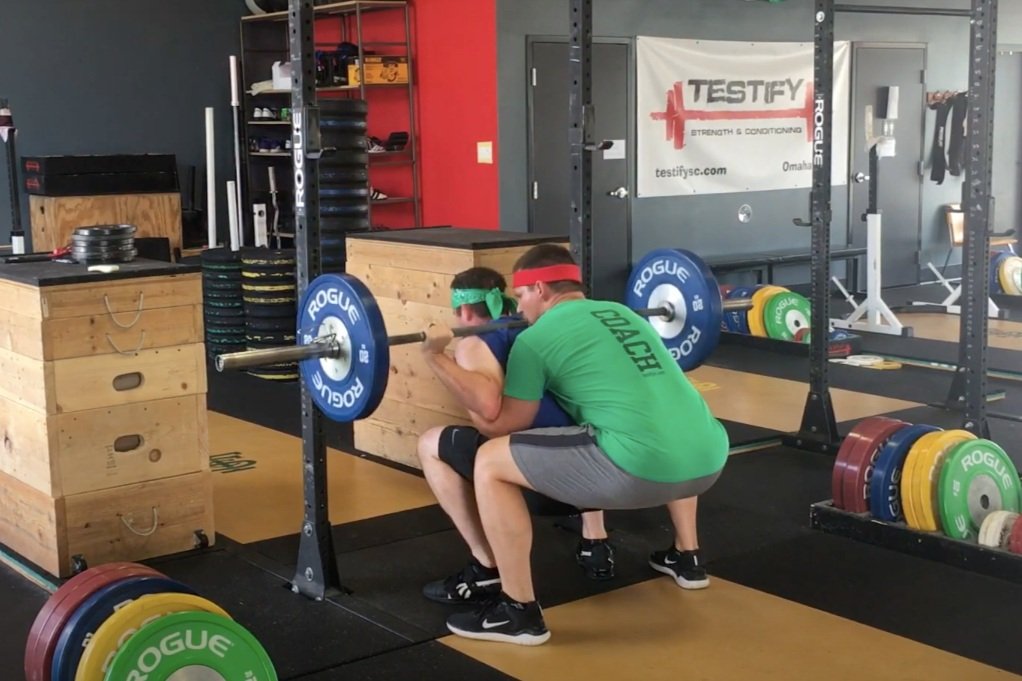The Box Squat: What, How, and Why
/(A Blast from the Past article originally posted on 09/16/22)
In two of our recent articles, we covered the tempo squat and the pin squat. Today, let’s briefly discuss the box squat.
What is a box squat?
A box squat is a squat wherein you descend, pause with your rear end on a box, stack of bumper plates, or something similarly sturdy, and then squat the weight back up again.
How do you perform a box squat?
You descend as you would in a normal squat - hips go back, knees go forward and out (staying in line with your toes), and your chest points down - but you’re going to heavily focus on reaching back with your hips as you descend.
The box needs to be at a height so that - when your butt is on the box - your hip crease is just below the top of your patella. In other words, the box needs to be set so that you can hit depth. This may seem obvious, but checking this on video is always a good idea if you’re coaching yourself.
At the bottom of the squat, pause a legitimate one to two seconds (“one-thousand-one, one-thousand-two”) and stay tight during this pause. The box will take a little of the weight when your rear end is on the box, but it shouldn’t take much - we’re not relaxing at the bottom, and we’re not rocking back-and-forth. You should still be supporting most of the weight of the barbell.
After the pause, drive the hips up out of the hole as you would in a normal squat and continue your ascent. It will be slower than a regular squat as we’ve taken out the stretch reflex.
Why might you do box squats or where might you see them in your programming?
Perhaps your coach has programmed you within a Heavy-Light-Medium structure or something similar. In this case, you might see a box squat show up as a medium day squat or even a light day squat (the loading and volume need to be carefully managed - especially if it’s a light day squat).
Due to the pause on the box, the box squat eliminates the stretch reflex out of the bottom, so it’s a disadvantaged squat, and thus you’ll need to use a lighter weight than with your regular squat, so it fits the bill for a medium or light squat. However, as with our previously discussed tempo squat and pin squat, remember that “lighter” does not necessarily mean easy.
The box squat, like the tempo squat and pin squat, can also be useful for a number of other reasons - one of which is that it can help a lifter focus on a specific technical issue. For example, if Jim-Bob struggles to reach backward with his hips as he initiates his descent and therefore tends to squat with a rather vertical back angle, a box squat can help with this since it gives a target for his hips. This can help him focus on reaching his hips back for something specific and tangible and thus will help him point his chest at the floor at the same time (because the lifter has to lean over more in order to reach back farther with the hips).
Box squats can also be used to help with achieving depth. Let's suppose that Jim-Bob is just starting off and is not strong enough to get down to depth and successfully squat back up again; in this case, we can set up a box height that is higher than normal (thus creating an above parallel squat). We would choose a height at which he can squat down, touch his butt to the box lightly, and then drive back up again.
On subsequent workouts, we would lower the box slightly each time (roughly an inch) and keep lowering it until Jim-Bob is actually squatting to depth. At this point, we’d remove the box. It’s worth noting that, in this case, we’re just using the box as a marker for depth, so Jim-Bob would lightly touch his butt to the box and immediately drive back up (i.e., don’t pause on the box when using the box for this purpose).
This wraps up our short discussion of the box squat, and as always, we hope this helps you get stronger and live better.
(Some links may be affiliate links. As an Amazon Associate, Testify earns from qualifying purchases.)













